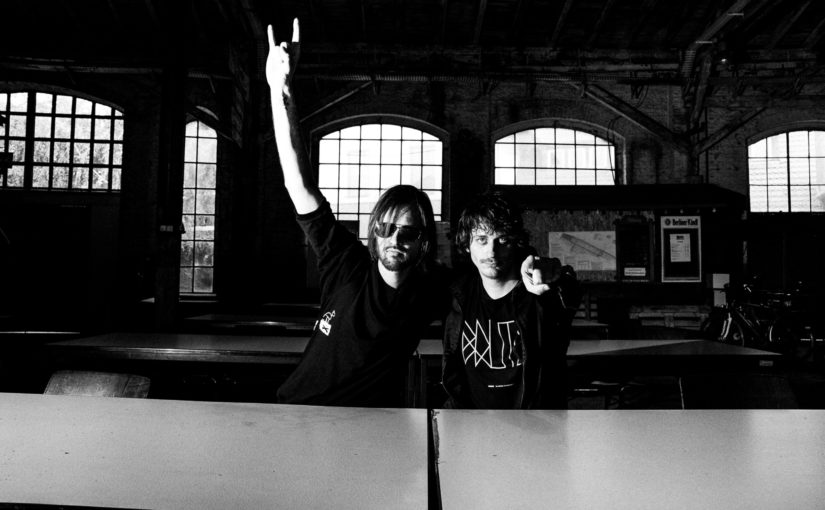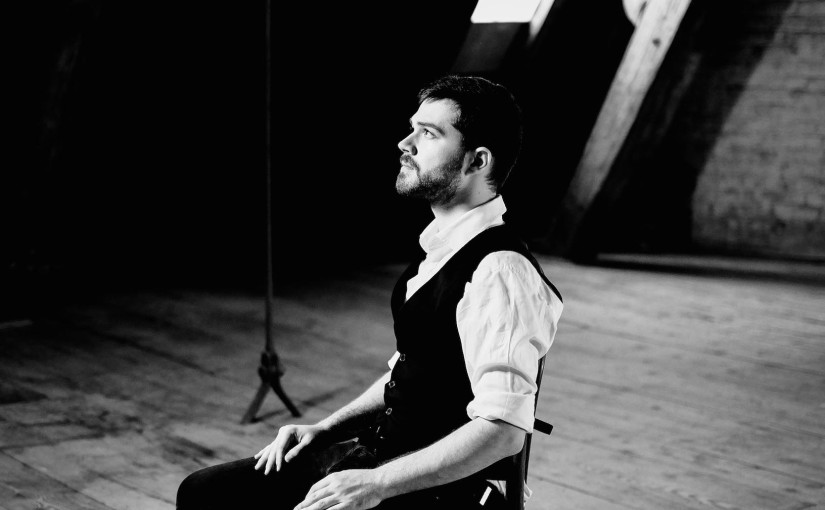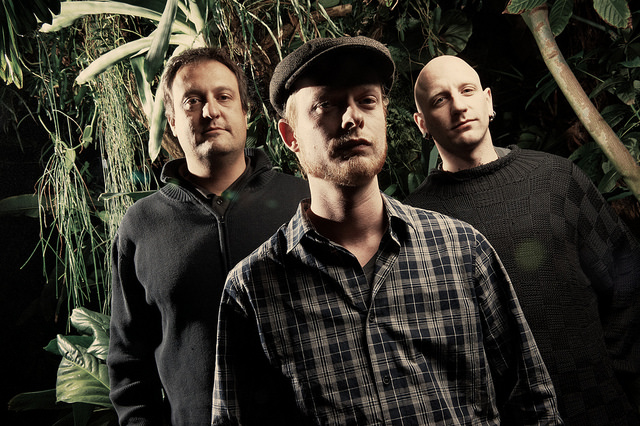This is the fourth in a series of interviews with the Kolapse remixers. Kathy Melaas, a generous longtime listener very familiar with my music, interviews German techno duo Drescher und Wemmser‘s Chris Herb and Alex Dowerk.
Photography (c) Valquire Veljkovic
Simply stated, I love music. I have absolutely no music education, zero talent at playing or singing, and listen solely as a fan, a music lover, a junkie. I listen not from a technical standpoint but from an emotional, visceral and cerebral place.
When Tobias Reber (composer, musician, performance artist, teacher – electronic, electroacoustic and algorithmic composition, and improvisation) invited me (music superfan girl, groupie, general geeky dork) if I’d be interested in interviewing some musicians regarding their use of his pieces from his Kola release, I said yes in a nanosecond. Then the panic set in. How in the world was I going to do this and not sound like a complete buffoon? The answer? The only way I could: honestly yet informally, driven from the heart, with my passion for the art form as my guide.
What follows below is the email conversation I had recently with Alexander Paul “Drescher” Dowerk and Christopher Jan “Wemmser” Herb, who record as Drescher und Wemmser.
Kathy: Greetings, gentlemen! Tobias asked me to listen to Schmierfett where you used samples from Maniok which is on his release, Kola. After listening to the two pieces back to back on repeat over the course of nearly two weeks, to be quite honest, I have absolutely no idea what segment of Maniok you may have sampled. Can you tell me about Schmierfett and Tobias’ influence upon it?
Chris: We used 2 samples from Maniok: The Gong/Taiko hit with added delay and the “Melody” at 1:30 reversed and processed. We used the original tempo (90bpm) but the kick is in quarter note triplets so it appears to be much faster (120bpm).
As for composition we used a pyramid shaped song structure so the middle of the song is the most intense, the beginning and end are more relaxed. We feel that this structural approach fits Tobias’ algorithmic composition style and it will work on the dance floor.
Kathy: Thank you for the explanation! You know that I listen not with a trained ear but with my head and heart. From Tobias’ Maniok, I get a feeling of anticipation, and anxiousness. A racing, stumbling heartbeat. Drumming of fingers on a table, or huge raindrops on a bucket ahead of a cloudburst storm. Unpredictable, but not. I appreciate the unexpected turns that Tobias’ Maniok takes. How it engages the brain, searching for a pattern, the mathematical formula. Schmierfett, on the other hand… POW! When the beat kicks in on your songs, it grabs hold and doesn’t relent. Visceral muscle memory. Rebar, sheet metal and welding goggles, baby! Intensity. Non-stop. ZAP! Jacob’s ladder kajillion gigawatt jolt straight up the spine!
Alex: Thanks a lot! We are indeed interested in composing songs and creating sounds that grab you from the first second or any other moment you encounter the song. Drescher und Wemmser is all about intense energy and brutal power. We get inspired by hearing massive machines, broken signals, misheard music and alien sounds. I guess it’s what you get if you put 2 prog metal guys in charge of creating electronic music.
What was it about Tobias’ Maniok that grabbed your attention? How did you take that and incorporate it into your own work?
Chris: We don’t necessarily take our favorite songs as a base, but a song that is a good source for samples. So we often times take a short phrase and start to play around with it: change tempo, pitch and reverse it until something interesting forms.
Alex: For me I thought that the erratic rhythm of the main “melody” gives us a good start to create something new. We soon moved into a different direction, but the initial spark was still important.
Alex, in another different direction, I know you and Tobias are Blast Unicorn together. Love the quirk and the humor there. Will there be more?
Alex: Yes, there will more Blast Unicorn in the future, but for when, I really can’t tell. In fact we already started with some ideas in 2015 and did plan to do an EP, but other projects received a higher priority. Also, our debut album Van Halo was a huge effort and pushed the limit in every regard. It’s truly boundary breaking music and requires a certain mindset. Currently I’m more interested in writing strong catchy songs in the genres of roughly EDM and Prog Metal than doing avant-garde music. But the unicorn never sleeps and ancient texts tell of its glorious return.
Fantastic news! What other projects have you collaborated on? What it is like working with Tobias?
Alex: I love working with Tobias. We have been friends for more than ten years and share a lot of influences and favorites. Tobias has often been my connection to the academic world of music, in particular contemporary classical music. We also did a lot Touch Guitar practice and research together, both in private and the Touch Guitar Circle with Markus Reuter and Erik Emil Eskildsen.
Tobias often surprises me with a completely new perspective on sounds or compositional ideas. Things that seem clear for me where they should go suddenly get a turn and break into completely new ground. There is strong sense of trust in our collaboration. The trust that regardless of what we do, it will have a high quality. Whether it’s tightly composed pieces (Blast Unicorn) or completely free improvised music (Untight, together with Bernhard Wöstheinrich).
You can hear us both playing together on the following records, with Blast Unicorn being the purest of a Reber/Dowerk collaboration: Blast Unicorn’s Van Halo, Untight – Live at Theaterkapelle, and Troy Jones’ New Peace.
Chris? What have you done with Tobias? Impressions?
Chris: Tobias has mainly been my touch guitar and (algorithmic) composition teacher, but apart from the stuff he has taught me, I recently realized how much Kola influenced me how I think about rhythm and it inspired me to really get into percussion synthesis.
Can you tell me a bit about how the two of you, Chris and Alex, work together? How you create?
Alex: It’s great to work with Chris. He’s a fantastic sound engineer and we almost always share the same taste in music and things. We developed such an efficient work flow, that we can create something top notch sounding in a very short amount of time. Mostly we find or create a word for a song title and then discuss what haptical and auditive qualities that word has. This both inspires us and creates some restrictions, in which we can start to work.
I would say we work 75/25 together and remotely. When we are in the studio together, we have a very democratic way of working. When someone has an idea of how to progress in a piece, he takes over control of Ableton Live and just starts to compose or create sounds while the other one is commenting or just chilling on the couch, listening. This goes on for a while, until the other one feels inspired or has new ideas. Then we switch places, enabling the former “active” member to relax and get a new perspective on the song. We never look back on older versions of song, we just move forward. We know it will be great.
Thank you both for sharing your thoughts on all of this, and thank you for your music! I look forward to hearing more from all your collaborations.
Thank you, it’s been a pleasure.
–
FURTHER LINKS:
drescherundwemmser.com
chrisherb.bandcamp.com
alexanderdowerk.com
blastunicorn.com
Download Kolapse for free, play and purchase Lärmheim’s music on Bandcamp and sign up for the a100ql newsletter where I share news, thoughts, essays and materials related to the blog once or twice per month.




